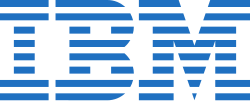Transaction Processing Facility
 |
|
| Developer | IBM |
|---|---|
| Written in | Basic Assembly Language sks s/390 assembly C C++ |
| OS family | z/Architecture assembly language (z/TPF), ESA/390 assembly language (TPF4) |
| Working state | Current |
| Source model | Closed source (Source code is available to licensed users with restrictions) |
| Initial release | 1979 |
| Latest release | V1R1 / December 2005 |
| Platforms | IBM System z (z/TPF), ESA/390 (TPF4) |
| Kernel type | Real-time |
| Default user interface | ? |
| License | Proprietary monthly license charge (MLC) |
| Official website | IBM: z/TPF operating system |
Transaction Processing Facility (TPF) is an IBM real-time operating system for mainframe computers descended from the IBM System/360 family, including zSeries and System z9.
TPF delivers fast, high-volume, high-throughput transaction processing, handling large, continuous loads of essentially simple transactions across large, geographically dispersed networks. The world's largest TPF-based systems are easily capable of processing tens of thousands of transactions per second. TPF is also designed for highly reliable, continuous (24×7) operation. It is not uncommon for TPF customers to have continuous online availability of a decade or more, even with system and software upgrades. This is due in part to the multi-mainframe operating capability and environment.
While there are other industrial-strength transaction processing systems, notably IBM's own CICS and IMS, TPF's specialty is extreme volume, large numbers of concurrent users, and very fast response times. For example, VISA credit card transaction processing during the peak holiday shopping season.
The TPF passenger reservation application PARS, or its international version IPARS, is used by many airlines.
One of TPF's major optional components is a high performance, specialized database facility called TPF Database Facility (TPFDF).
A close cousin of TPF, the transaction monitor ALCS, was developed by IBM to integrate TPF services into the more common mainframe operating system MVS, now z/OS.
TPF evolved from the Airlines Control Program (ACP), a free package developed in the mid-1960s by IBM in association with major North American and European airlines. In 1979, IBM introduced TPF as a replacement for ACP — and as a priced software product. The new name suggests its greater scope and evolution into non-airline related entities.
...
Wikipedia
